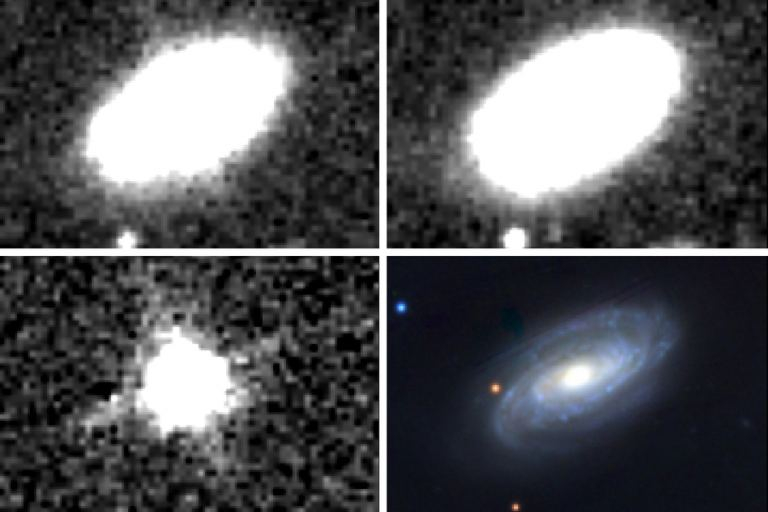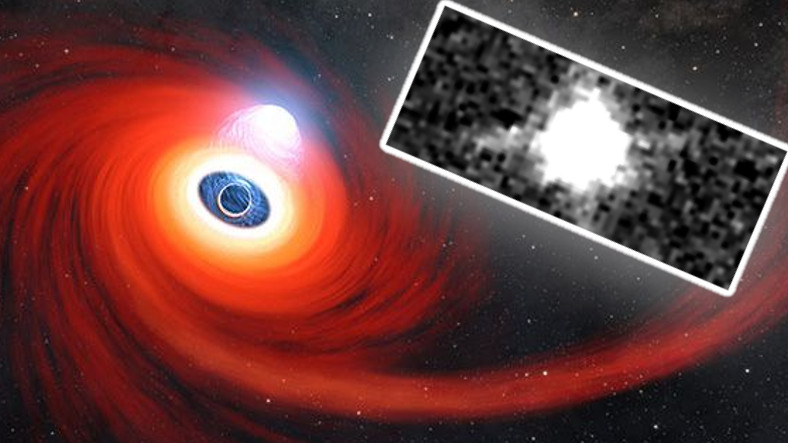What we know about black holes, one of the most mysterious and interesting objects in the universe, is increasing every day. Now, scientists at the Massachusetts Institute of Technology in the US, a black hole detects a black hole eating a star. The research results have been published in The Astrophysical Journal Letters.
This moment reveals an extremely rare event and allows us to see a black hole swallow a star up close for the first time.
The event occurred in the galaxy NGC 7392, 137 million light-years away.

The glow detected in the galaxy NGC 7392 in 2015 (top left), Observations of the same galaxy in 2010-2011 (top right), bottom left revealing the detected TDE event by revealing the difference between the first two images. The lower right image is the image of the galaxy.
Every 10,000 years, the center of a galaxy lights up when a supermassive black hole shatters a nearby star. “tidal disturbance event”, or TDE for short, in this astronomical phenomenon, as the black hole attracts stellar material, it emits a large amount of radiation, resulting in great glow.
This event, detected by MIT researchers, shows a TDE much closer than anything we’ve seen to date. The event, dubbed WTP14adbjsh, is 137 million light-years away. NGC 7392 galaxy and allows us to see the eerie glow of a black hole swallowing a star.
It also represents a first by being captured in an unusual light. WTP14adbjsh is quite clear rather than optical or x-ray an infrared glow was observed. This suggests there may be tidal disturbances that we missed because we weren’t looking in the right place.
Christos Panagiotou, an MIT astrophysicist, said:Finding this close TDE is statistically significant for such events not seen by conventional methods. you can be manyI reveal” he says, adding that if we want to find the full picture of black holes and their host galaxies, we should try to find them in infrared.
BluTV and Hepsiburada Premium for 1 TL in the first month! No Cheaper














